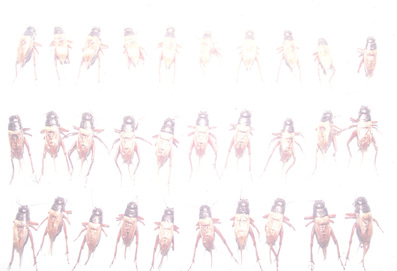Avoiding inbreeding
|
In the lab, female crickets of a very closely related species that mate with a related male and an unrelated male are able to avoid using the sperm from their relative to fertilise their eggs – thereby avoiding inbreeding. This is a remarkable ability, which suggests that it might have evolved because females that are able to do this have healthier offspring who are also able to do it. This could only happen if wild females occasionally mate with closely related males, creating the opportunity for females that can avoid inbreeding to leave more offspring than females that can’t. So, do wild females mate with their relatives?
|
We have discovered that matings between full siblings do indeed occur in the wild, and that there is a slight tendency for more closely related individuals to be found closer together. However, there is a lot of mixing in the population, so at present it doesn’t look like females would have a lot to gain by being able to avoid using sperm from their brothers, so although we know that inbreeding does occur in the wild, it shouldn't be too much of a problem.
Download our paper on this work here
Download our paper on this work here


